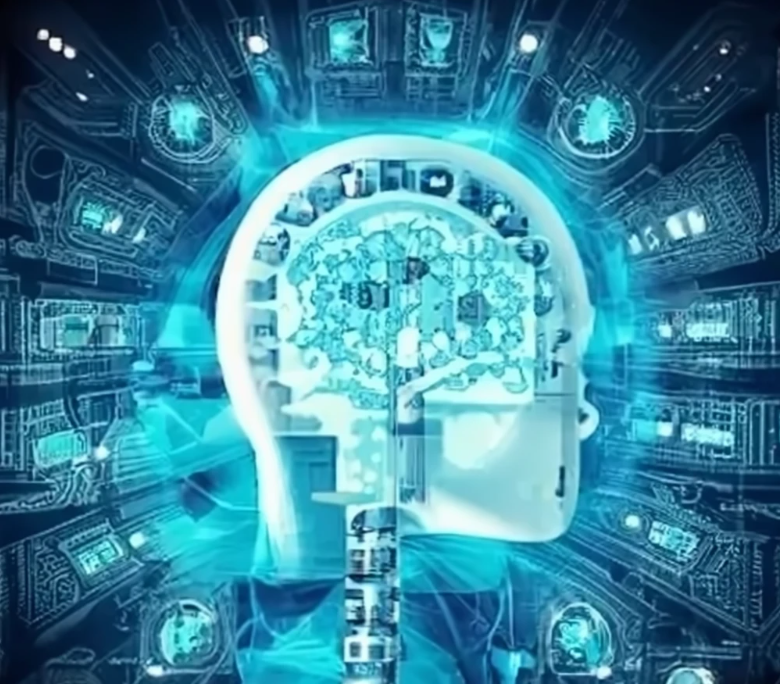Promising Potential of AI and Machine Learning in App Development
The prowess of AI and machine learning in the arena of application development cannot be underestimated. These technology giants have revolutionized the way apps interact with users, making them more intuitive, customizable, and engaging, thereby taking user experience and performance efficiency to new heights.

Machine Learning, an impressive subset of AI, imparts systems the power to learn, evolve, and derive conclusions from piles of data with zero human aid. The strategic merger of AI and Machine Learning is destined for greatness in the realm of app development. This ingenious combination paves the way for efficient processing of data, deduction of valuable insights, and automation of crucial decision-making, consequently giving rise to intelligent apps that upraise the user experience to the zenith.
Indeed, the overwhelming majority of businesses are warming up to these smart technologies in view of understanding the enormous potential that AI and Machine Learning bring to the table. Introduction of these futuristic AI-centric algorithms in applications aids in enhancing the level of user-app interaction, simplifying business procedures, extracting actionable insights, and strategizing efficient business models.
The stakes are high with the innovative infusion of AI and Machine Learning in applications. The coalescence of these robust technologies not only improves app functionality and usage but also sets the ground for smart automation within apps. With AI and Machine Learning at their service, apps are becoming adept at predicting user behavior, learning from past interactions, and providing personalized recommendations, leaving end-users in awe of their capabilities.
Businesses adopting AI and Machine Learning in their apps have observed a positive trajectory in their performance. In-depth analytics provided by these systems are potent tools to strategize business operations and help in carving a streamlined pathway towards achieving targets.
The potential of AI and Machine Learning in app development is indeed promising. The challenges that lay ahead are big, but with technology continually evolving, the solutions come hand in hand with the complexities. As technological creativity knows no bounds, the application development sector, powered by AI and Machine Learning, gleans significant potential for the future, setting new standards for user interaction and business strategies.The union of AI and Machine Learning in app development speaks volumes about the current technological advancements. The perfect blend is creating highly intuitive, user-friendly apps which are changing the way businesses interact with their customers. Clearly, these tools are powerful allies in today’s digital sphere and will continue to dominate in the coming times. The true scale and potential of AI and Machine Learning are yet to be revealed as we continue to witness their massive impact on application development.
Incorporating AI and Machine Learning into App Development
Artificial Intelligence and Machine Learning have become focal points in current technology trends due to their immense potential, which is evident in application development as well. By integrating these revolutionary technologies into applications, the canvas of possibilities expands significantly. For an enterprise striving to ride this wave of innovation, a thorough and cautious approach is required to ensure success.
Before setting out to incorporate AI and Machine Learning into an application, clear and tangible objectives must be set. This implies defining what the application should achieve and how it should function, keeping user needs and expectations at the core. Businesses should root this process in a precise understanding of what issues the application aims to solve or streamline for its user base, which could range from mundane tasks to complex problem-solving.
The process of developing such an application pivots around data collection and processing. It’s an integral part of the whole procedure that empowers the practical use of AI and Machine Learning. High-quality and accurate data not only aids in devising the application during the development phase but also plays a pivotal role in refining and enhancing the application after it’s been launched and is in regular use.
Progressing forward, the choice of algorithms for the application is a decision requiring careful inspection. The digital world is brimming with a variety of AI and Machine Learning algorithms, each with its distinct capacities and limitations. It becomes of paramount importance to select algorithms that resonate with the objectives set for the project initially, essentially those that best embody the application’s purpose.
Subsequent to putting the suitable algorithms in place, the application must be trained adequately. During this vital phase, the chosen algorithms are fed with the collected data, which educates the application on how to respond and operate under different circumstances. Patience is key during this stage as the precision and reliability of the application enhance with continued and thorough training.
Ultimately, life after launch for the application is not a period of dormancy. Regular monitoring is a busy and critical period filled with refinements, bug fixes, and improvements. This diligent oversight ensures the application remains powerful, efficient, and user-friendly. Overall, amalgamating AI and Machine Learning into an application is a promising avenue towards creating smarter, more intuitive and efficient tools for users.
Implications of Smart Algorithms for Real-world Applications
The impact of smart algorithms on practical applications cannot be understated. We’re witnessing a new standard emerging, where the incorporation of smart algorithms into applications is transforming sectors like healthcare, finance, telecommunications, and a host of others, bringing with it a significant shift in longstanding practices.

Take healthcare as an example; AI-backed algorithms have been pivotal in crafting tools that enhance disease prediction and diagnosis, making them a lot more accurate. These smart algorithms are instrumental in analyzing large volumes of health data, assessing patterns and inconsistencies, and thereby revolutionizing disease management and patient care. It signifies a notable technological leap in the sector, transforming the way healthcare professionals diagnose and treat diseases.
Financial industries, similarly, are pushing boundaries with smart algorithms. Machine Learning applications are central to the more accurate risk assessments and financial planning. As a result of Machine Learning’s capabilities to assess and analyze enormous data, making accurate predictions has become more achievable, proven successful in risk assessment and financial planning. These technologies aid in managing complexities of the financial world, offering solutions that are smarter, more precise, and robust.
In telecommunications, where data is king, AI-driven algorithms have proven their worth. By forecasting network congestion and optimizing network usage, these algorithms reduce customer churn. This resultant elevated network performance enhances customer experience and satisfaction, streamlining operations, and contributing to business growth.
The implications of AI and Machine Learning are not exclusive to these sectors. Their potential is far-reaching, transforming a multitude of industries, redefining strategies, and delivering impressive outcomes. To sum it up, AI and Machine Learning are vital elements in modern application development. As they continue to be embraced by organizations worldwide, it’s evident that we’re heading towards an era buzzing with smarter, more efficient applications. These technologies are not just paving the way for advancements, but they’re redefining success in business operations, creating vast possibilities and opportunities for future generations.